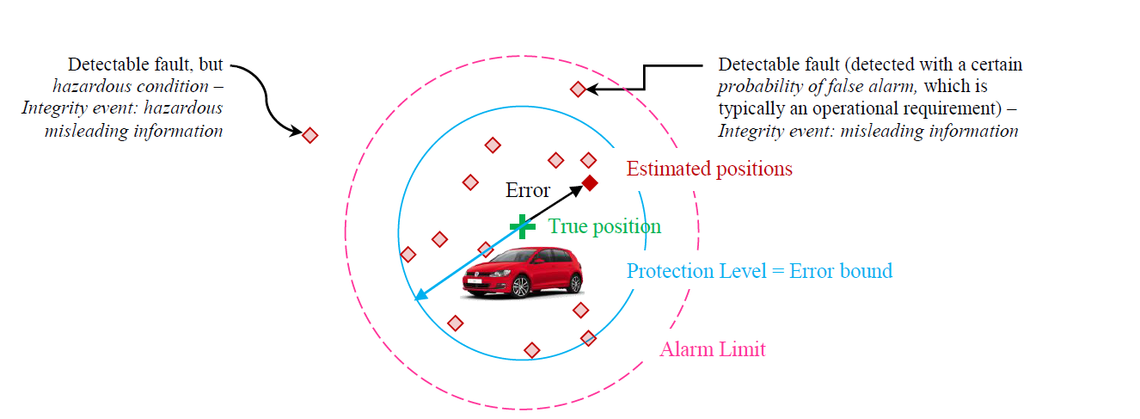
Sept. 13, 2020
GNSS integrity monitoring for precise positioning with low-cost receivers

Description: In recent years, there is an increasing demand for precise positioning with low-cost GNSS receivers in support of applications from self-driving cars to smartphones. Low-cost receivers, however, have much larger noises in measurements than high-end receivers and further the positioning solutions would be much affected by high multipath and signal attenuation in challenging environments. Due to stringent reliability requirements for safety-critical and liability-critical applications, GNSS integrity monitoring is of critical importance to the development of real-time precise positioning systems with low-cost GNSS receivers.

GNSS integrity monitoring is an effective measure of trust that can be placed in the correctness of the information supplied by a positioning system and implemented to support fast response, strong autonomy and low-cost. It includes integrity monitoring of raw measurements in the observation domain by fault detection and exclusion procedure, and integrity monitoring of solutions in the position domain by protection level, which can provide timely alarms to users if they meet a hazardous situation according to prescribed integrity requirements. However, GNSS integrity monitoring still faces some challenging issues. For example, the used error model is commonly based on Gaussian white noise while actual errors are often non-Gaussian and colored noise. Further, the poor-quality measurements from the low-cost receiver are often affected by multiple faults that need to be addressed. To solve the above problems, the proposed research will be aimed at developing a GNSS integrity monitoring system to support the determination of realistic protection level at the user level for precise positioning with low-cost receivers. The preliminary results from land vehicle experiments with low-cost receivers indicate that integrity monitoring based on a Kalman filter considering colored noise in measurements can provide a more realistic protection level and bound positioning error at cm-level with reduced false alarms. A realistic stochastic model has also helped form more reliable test statistics for fault detection and exclusion and test results have demonstrated improvement for both global test and local tests.
Funding sources: China Scholarship Council, Natural Sciences and Engineering Research Council of Canada
